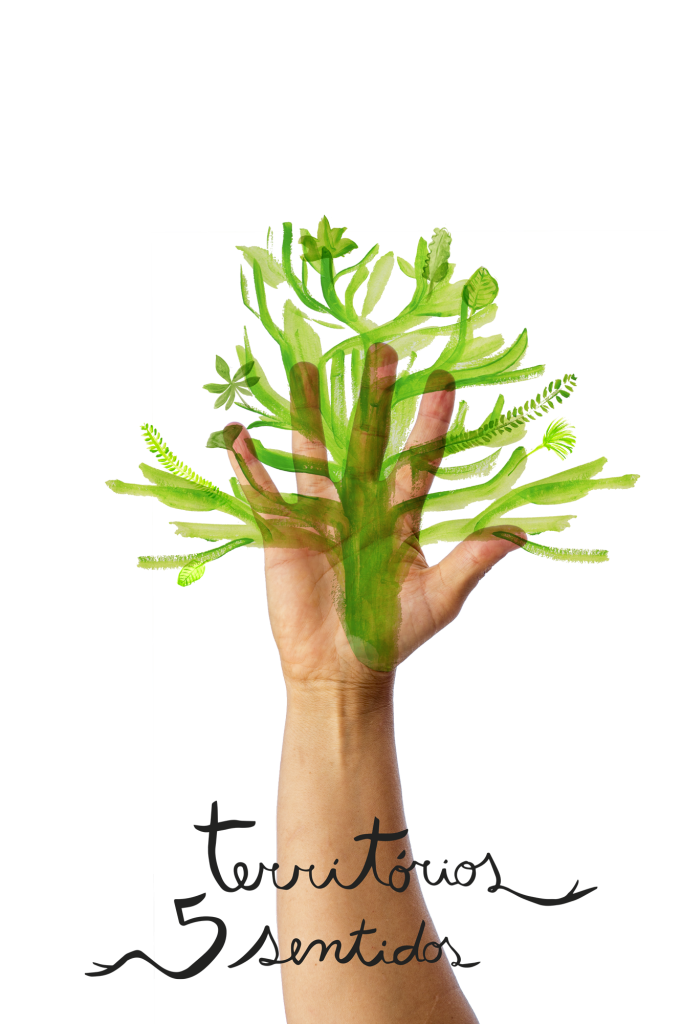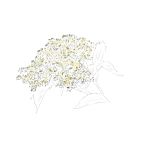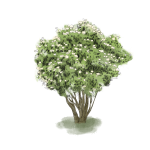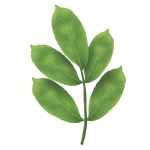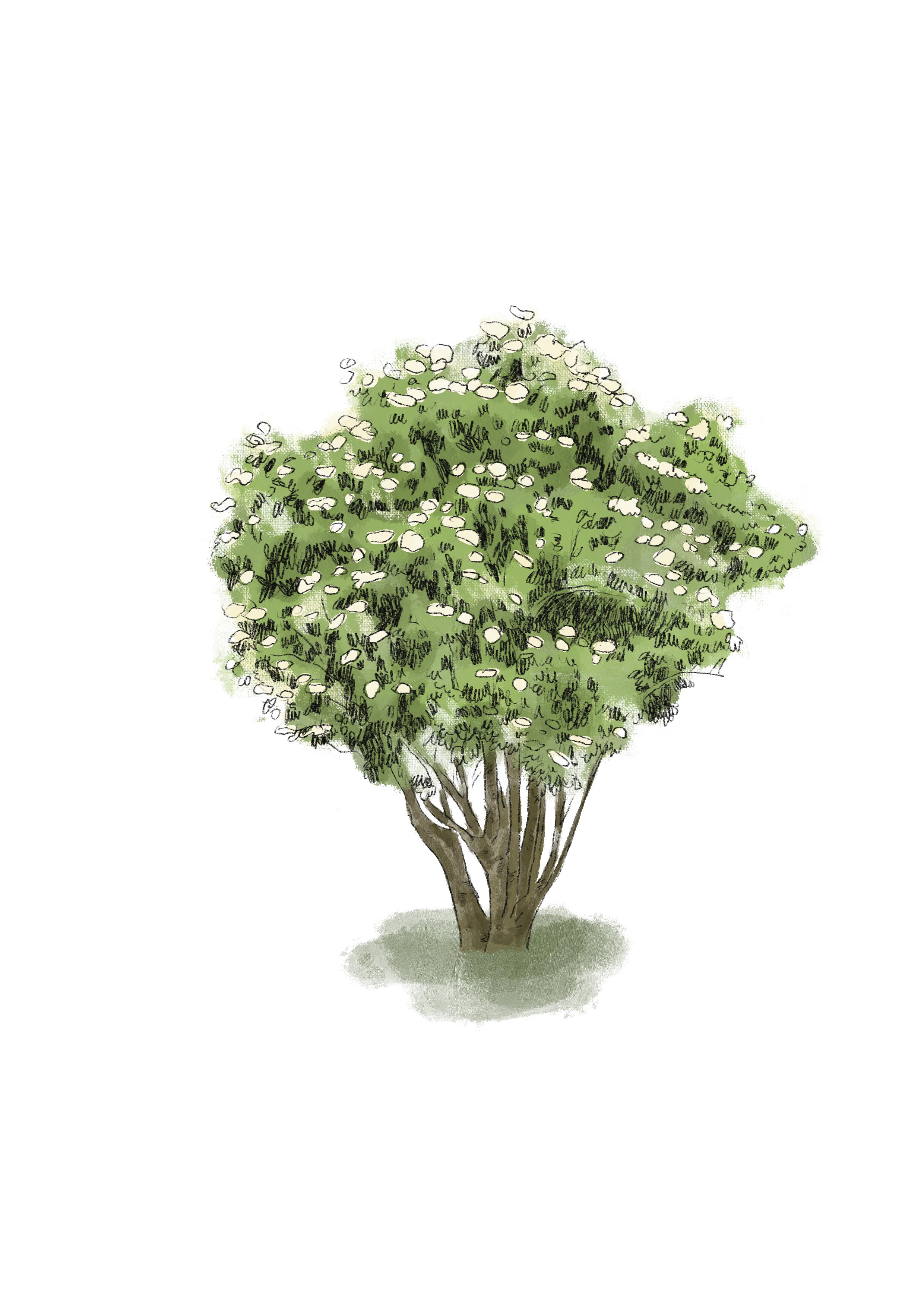

Elder Tree
Sambucus nigra
The elderberry is also known as elderberry, black-elderberry and rosehip, among other names.
It is a shrub or small tree, deciduous, branched from the base, with a dense and rounded canopy; it reaches a height of 3 to 10 m. The trunk is brownish-grey when young, and has a thick bark and longitudinal grooves when it is older. The light, arching branches contain a whitish, spongy pith, which causes them to become brittle. The leaves are dark green, ovate and upright, with 5-9 lanceolate leaflets. From March onwards, it develops large blossoms of white, fragrant flowers grouped in corymbs, followed by large flat clusters of small, juicy blackberries.
The elder wood is very hollow and brittle and is therefore easy to carve. It was used in the manufacturing of coffins and crosses to decorate graves, but never in the production of cradles.
The use of elderberry for medicinal, culinary and cosmetic purposes has been known since prehistoric times.
The flowers, fresh or dried, the berries and the leaves can be used for medicinal purposes. The latter are somewhat toxic.
The fried flowers can be added to ice cream and jam recipes by heating them in milk and then straining, without letting them boil.
The flowers have anti-inflammatory and diaphoretic properties, very useful in infusions to reduce fever and relieve coughs as they are rich in essential oils which contain linoleic acid and mucilage, steroids, flavonoids, rutin, sugar, and pectin. Bioflavonoids help improve blood circulation. An infusion of the flowers in vinegar can be used for gargling to relieve sore throats and tonsillitis, as well as to treat conjunctivitis and thrush (by rinsing and using a compress). This infusion also stimulates the excretion of urine, eliminating toxins from the body; it is also useful for the relief of arteritis, rheumatism, and gout, as well as in acute sinusitis.
Flowers help preserve apples when placed in alternating layers in a closed cardboard box.
The berries or fruit that grow between June and August are dark purple, almost black: they contain sugar, fruit acids, vitamins A and C, and bioflavonoids. Its properties are mildly laxative but also antidiarrheal. They can be used in syrup or in a concentrate to help fight cough as well as colds. Raw, unripe berries can be a little hard to digest and should be cooked.
There are numerous recipes where the flowers and the berries of the elderberry are used. One of the better known is a syrup made from fresh flowers.
Champagne and elderflower wine can be found in some English pubs.
In many villages it is common for children to make whistles out of elderberry.
In Europe, it is common to find them near the villages, as it was believed that the elderberry tree attracted the Spirits of Good. It is said that on hot summer nights, these are the fairies´ favourite trees, perhaps because of the great luminosity of the flowers.
In Northern Europe, it is associated with Holda, the Goddess of death and fertility, and various rituals of pagan origin take place around it.
In some countries, on Saint John’s Day, it is traditional to eat fried cakes made from fresh elder flowers which are dipped in a flour, milk and egg batter, to prevent conflict between husband and wife.
Warning: Do not mistake the elderberry (Sambucus nigra) with the ebullus (Sambucus ebulus), the latter being a tall herbaceous plant much used in dyeing and its berries are rather toxic if ingested.
Video
Video Botanical Trail
Município de Castanheira de Pera
Elder Tree
